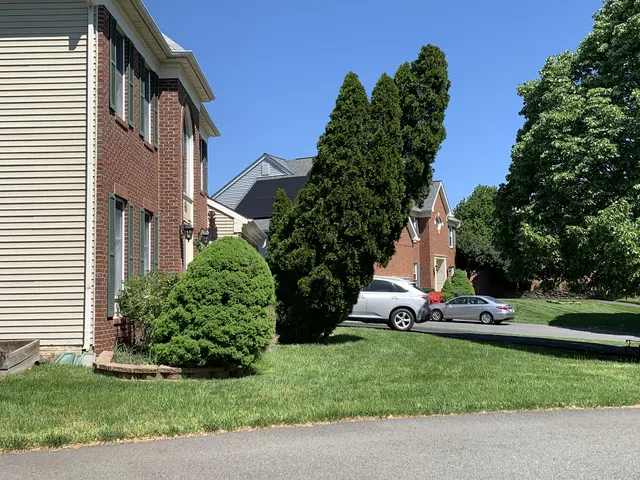I have watched my neighbor’s arborvitae bush for many years. Each year, it grows a little taller and leans a little more. Every year I expect it to fall over, but it never does. Will 2025 be the year that it finally topples?

Leaning Arborvitae
As a gardener, I think about how this arborvitae is slowing killing itself. Each year, it grows a bit taller causing it to lean a bit more. Perhaps in 2025 it will grow too tall and finally topple? I then realize that the arborvitae is not just growing up, but also is growing down. The above ground growth is obvious. The below ground growth of the roots is not directly visible. But these invisible roots firmly anchor the arborvitae into the ground, preventing it from collapse.
Interestingly, the top of this arborvitae is growing straight up rather than leaning. Does this imply the arborvitae leaned away from the house early in its life, trying to “reach the sun”? And now that it has sufficient sunlight, it is growing upwards rather than away from the house? I have always thought that this arborvitae was leaning because the ground around it was weak. Which reminds me of …

Leaning Tower of Pisa in the 1890s
As an avid traveler, I have always wanted to visit the Leaning Tower of Pisa in Italy. This is a bell tower built on soft ground next to the Pisa Cathedral. It was completed in 1372. By 1990, it was leaning at a 5.5 degree angle. Galileo Galilei is reputed to have dropped two cannonballs with different mass from the tower, demonstrating that their speed of descent was not affected by their differing masses. An effort to stabilize the tower was made at the end of the 20th century, but the tilt was not fully corrected because tourists want to see the tower leaning. The tower remarkably has survived at least four strong earthquakes. My neighbor’s arborvitae leans way, way more than the Leaning Tower of Pisa, yet is not nearly as famous. Pondering the similarities between the Leaning Tower and the Leaning Arborvitae makes me think…
As an engineer, I ponder the forces being exerted on the arborvitae. Of course, there is the force of gravity which is pulling the arborvitae downwards. But there is also an upwards force exerted by the roots buried in the ground. These two forces are not aligned as they would be with a bush growing vertically. Instead, they are offset. This means that when the arborvitae finally topples, it will rotate with the above ground portion falling downwards and the below ground portion “falling” upwards.
Currently the upwards force exerted by the roots is greater than the downwards force exerted by the weight of the tree (i.e. gravity), so the arborvitae stands (although leaning precariously). What could change this equilibrium? Certainly the growth of the bush, as described above. But the weather also has an effect. Winds blow the bush, providing a horizontal force that increases the torque around the axis of rotation (i.e. where the arborvitae enters the ground). Snow or ice accumulating on the branches increase the weight (mass) of the arborvitae and thus increase the downward force. Heavy rain loosens the soil, decreasing the resistance force of the ground / roots. Could the arborvitae possibly fall while I am watching it, so I can see if my analysis of the physics is correct? Hmmm…
As a former statistics major (sophomore year), I ponder the odds of the arborvitae falling while I watch. Assuming that I watch it an hour a week (this is possible – I am retired and have time to stare at a leaning arborvitae!), then the odds are 1 in 168 that I will see the arborvitae fall. Not very good odds.
The 1 in 168 calculation assumes that the probability of the arborvitae falling is constant from hour to hour, day to day, month to month. As discussed above however, the topple probability is not constant due to the additional forces applied to the arborvitae during bad weather (wind, rain, snow). Since I am unlikely sit outside in bad weather watching for the arborvitae to fall, my unscientific guess is that the odds of me seeing it topple are at least 1 in 1000. Pretty unlikely that I will see it. Which makes me think…
As a person living in a world filled with temptations, I am occasionally tempted to give the arborvitae a slight push – to help it to its inevitable demise. As discussed above, I’m unlikely to witness it falling any other way. But this is a thought which I quickly banish. As much as I would like to witness the arborvitae falling, I would never intentionally harm my neighbor (or their arborvitae). And if the wind/rain/snow hasn’t already toppled it, a push from me is unlikely to cause it to fall.
Finally, as a retiree after 40+ years of continuous labor, I realize how fortunate I am to have the free time to ponder a leaning arborvitae.
So, what do you think? Will 2025 be the year the arborvitae finally topples?